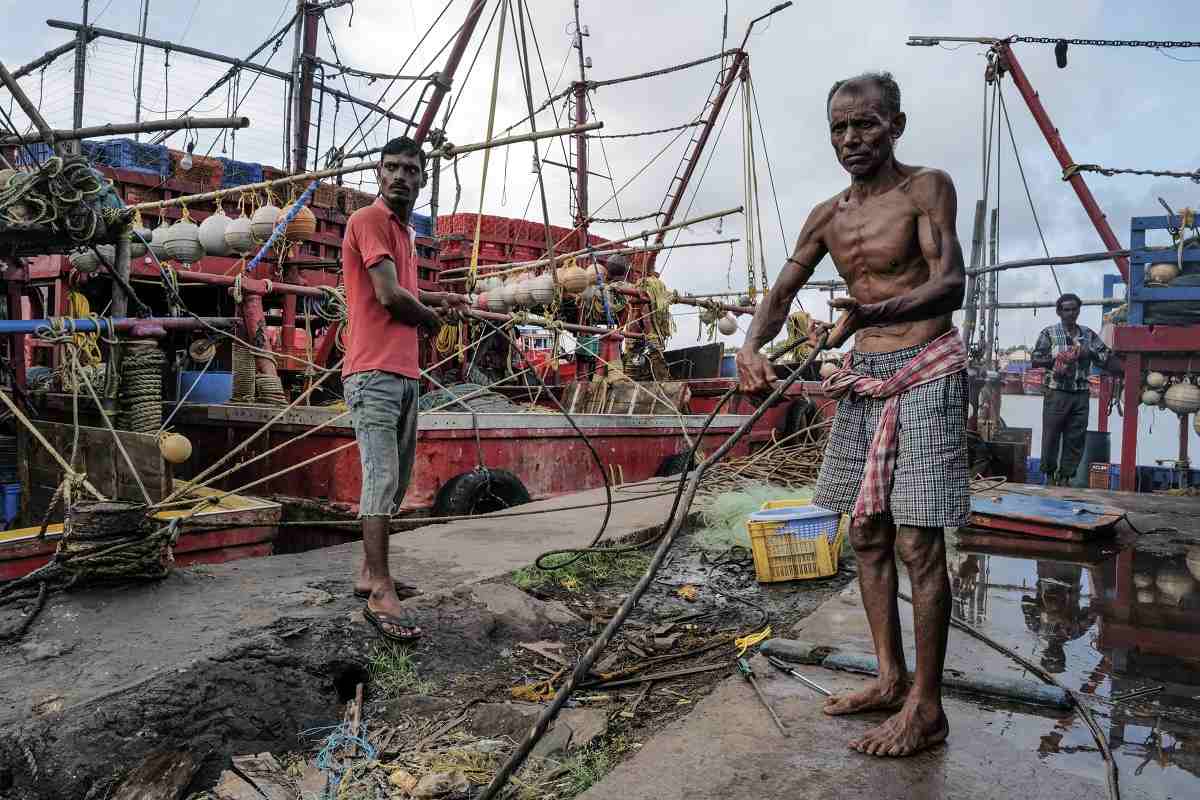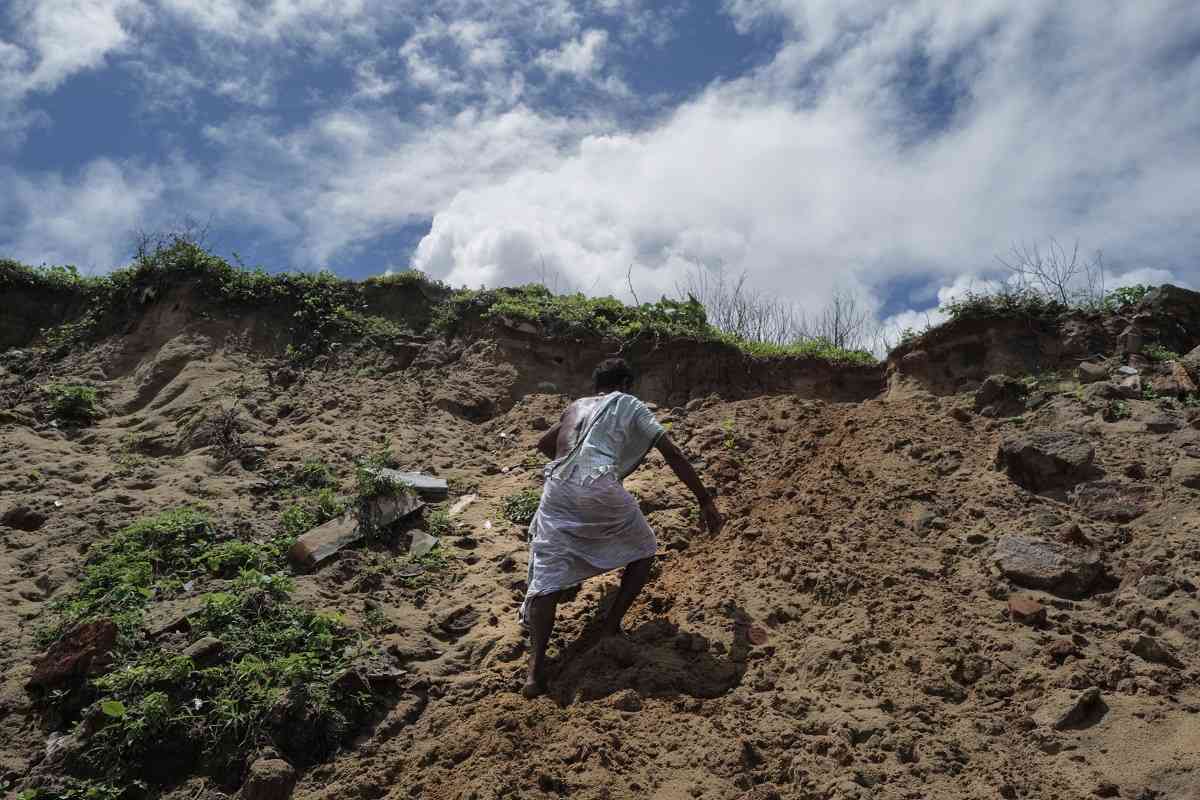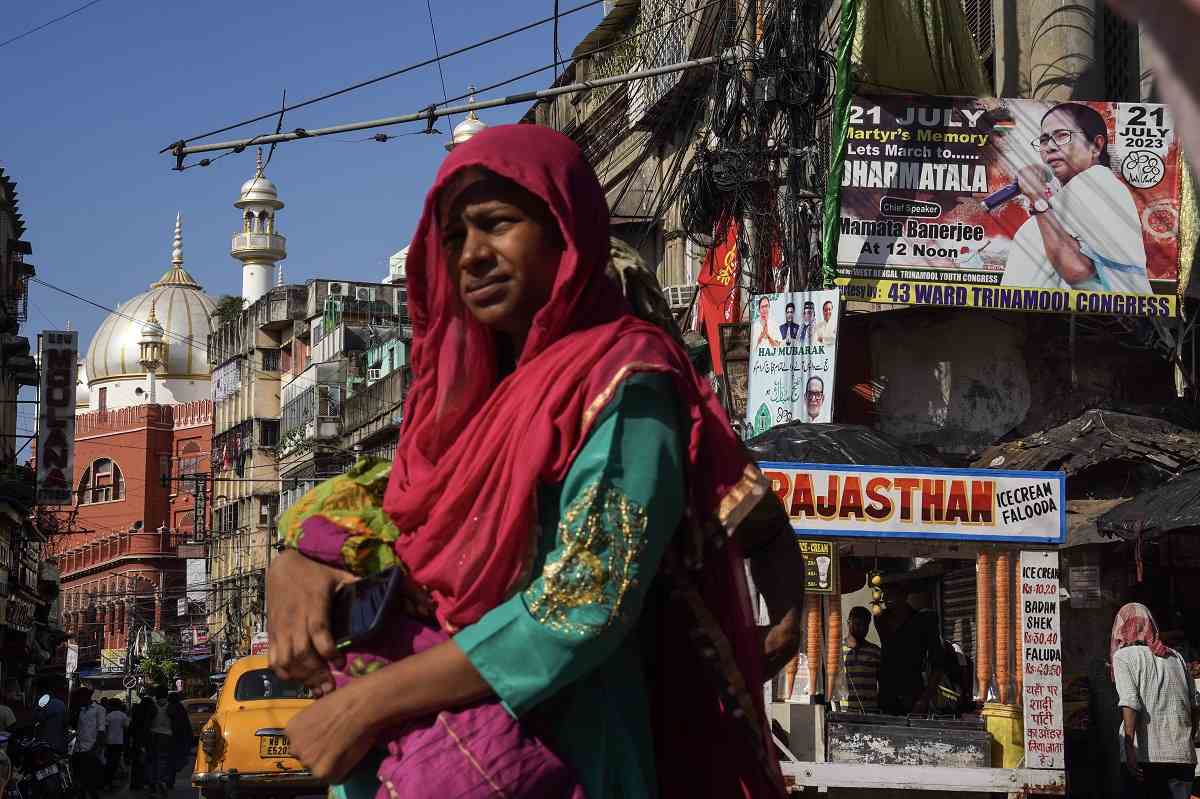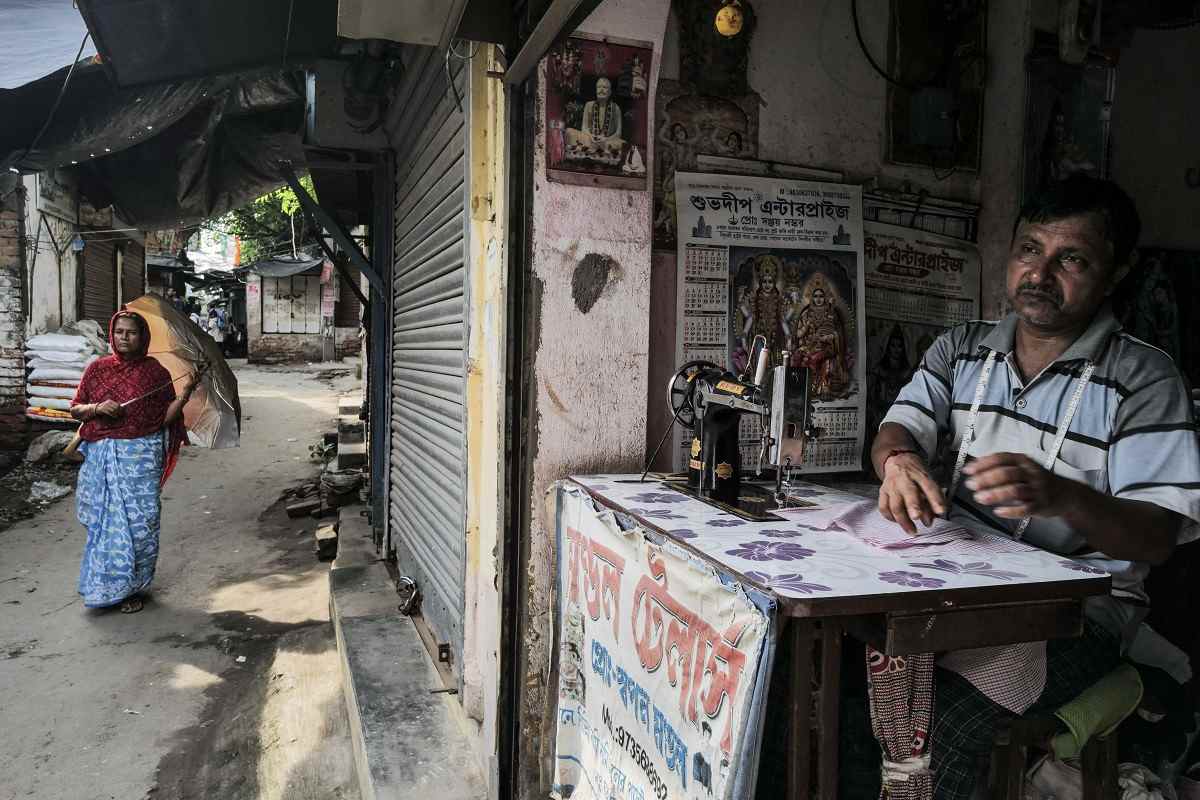
Fishermen from coastal villages have resettled in Paradeep, hoping for a bigger haul in the Indian seaport. But the supply of fish has plummeted here, too.
16:02 JST, April 25, 2024
Along the Bay of Bengal, where nearly 1.4 billion people live, water has become perilously unpredictable. On the coast of India’s Odisha state, repeated floods swallow villages. In Sri Lanka, a scarcity of water is carving cracks where ponds once formed and drying out paddy fields. In the mangrove swamps of the Sundarbans forest that straddles the border between India and Bangladesh, rising seas and cyclones are driving people inland, to congested cities like Kolkata for work.
Climate change is warming waters, shifting ocean patterns and transforming the region’s yearly monsoon from a reliable lifeline into a menace.
The water in the bay is rising faster than in other major bodies of water. The challenges confronting nations adjacent to it, densely populated along their coasts, probably foreshadow the struggles ahead elsewhere on Earth.
To explore these consequences, photographer Michael Robinson Chávez and reporter Karishma Mehrotra journeyed along the bay, documenting the myriad effects wrought on Indian and Sri Lankan communities by climate change.
In the Indian state of Odisha, they found that coastal communities that had relied for generations on fishing were being forced to rethink their livelihoods and look for new ways to eke out an existence. In the Indian megatropolis of Kolkata, climate refugees from coastal and island villages have crowded into teeming slums, desperate to find work as laborers. And in Sri Lanka’s Trincomalee district, the journalists discovered that climate change has confounded the monsoons, producing droughts that have ravaged rice paddies and drained reservoirs.
Odisha, India
The fishermen and their families in the coastal village of Ramayapatnam can say few words in English. But almost everyone here uses the phrase “climate change” in describing the changes they’re seeing. The villagers used to see 450 varieties of fish in their corner of the Bay of Bengal. After four severe cyclones over the past two decades, damaging the coral reefs and other habitats, they say they now see only 10 varieties, and their catch is dwindling.
Tidal surges have swallowed almost a thousand feet of their village: First, the beach road five years ago succumbed to erosion and then a row of homes four years ago. The remaining roadway ends abruptly at the crest of steep cliffs.
Along a coastline piled with crumbled concrete and brick walls, wildlife is replacing human settlement. Dogs, roosters and pigeons nibble at discarded plastic bags. Men point in the distance to show where the sea used to stop. “Another two full moons, and this corner we are standing on will disappear too,” they say.
Nonetheless, they pray twice a year to the sea, sacrificing goats and sheep.
Hundreds of villagers, the vast majority, have migrated often to other coastlines, where they feel most at home, resettling in the city of Chennai to make nets or the state of Goa to make alcohol. More often than not, they head to the seaport of Paradeep to engage in large-scale commercial fishing. Two hundred miles away, the gloomy gray-green water is barely visible behind hundreds of rusting fishing boats, moored side by side, as crows hover above.
Some fishermen from Ramayapatnam blamed Paradeep for reducing fish populations. But the port feels the effect, too.
An auctioneer at the Paradeep fish market with little to sell on a recent day shouted over the cacophony of an aggressive and tense fight about the scant supply. Only one boat had caught enough to sell.
“This is what happens when the fish don’t come,” he said.
Past the rubble of a godown storage shed and damaged nets strewn along the shore, R. Gudduamma sets up for the day’s fish market. Most of the members of her household have gone to Goa, where they spend long seasons working and saving just to repay the loans taken out to meet daily needs. She sits among other female fish sellers, whose husbands have all migrated for work, often commercial fishing, and have left the traditional fishing to them. They can feel the changes wrought by climate change.
“The sea has become violent,” said Pokallu Gangamaa.
A development of new homes built by the government for those displaced from their homes is too far from the water for the Ramayapatnam fishermen. They need to be able to watch for birds circling over the sea and silent waves on the horizon before deciding when to venture out to fish. And for those who would be willing to move to the development, many lack the documents to stake a claim to the transfer.
Only six homes out of hundreds in the dreary colony were occupied. A small church was silent and desolate. A few kids on roller skates whisked by.
Just north along the coast, another village called Podompetta has only two families left. The rest have abandoned their homes.
Purohit was one of the first to leave. He climbs up an embankment where his home once stood, heading to his new neighborhood and the nearby liquor shop. Every evening, two swigs of local liquor made of the mohua flower help him forget what happened, he said.
“It wasn’t the height. It was the speed of the wave,” said C.H. Pratima, one of the remaining few, standing in sand where three roads once ran before they were swept away. She looked toward a horizon of heavy clouds and said: “We knew it might happen. But we didn’t know it would happen so soon.”
Nearby, rice fields were submerged in water. Overgrown shrubs have engulfed the abandoned homes. Their paint has chipped away, leaving only the outlines of colorful paintings of gods. Bedroom doors have collapsed, allowing pigeons to fly straight through the rubble of the homes, out to a view of the sea.
A cyclone shelter at the end of the lane is now occupied by dogs.
Like Purohit, most of the folks of Podompetta bought government land six years ago down a rocky road lined with pine trees past a sprinkling of huts and fish farms. This nearby area has been set aside for those impacted by cyclones. On the nearby shore, Purohit weaves new nets, a skill learned from his father at the age of 15.
“Of course, there is pain,” said Chandragiri Danama, watching another home get built alongside her friend Bunga Kali. “We have no agricultural land. We only have the sea.” Schoolchildren with red ribbons cycle by.
“Fishing here, or fishing there, this is our only life,” said Kalaka Daneya, standing beside her.

Purohit climbs the embankment where his home once stood.
Kolkata, India
At the heart of one of the most threatened regions lies Kolkata, a bustling city of 15 million stretching to accommodate the region’s climate refugees. In its slums are those trying to flee the menacing waters. Creeping sea levels and disastrous cyclones have pushed tens of thousands of migrants out of the islands and into cities like Kolkata, where they often join construction crews and leave their fishing lives behind.
To the city’s south lies the world’s largest mangrove forest, the Sundarbans. The mangrove roots twist and weave above the swampy surface, much like the intertwined rivers that connect them with the coasts of Bangladesh and India.

In central Kolkata, even very modest neighborhoods are expensive, forcing many climate refugees to live far outside the city.
The train from the Sundarbans to Kolkata blares its horn near the cramped tailor shop of Swapan Mondol, who was one of the early migrants to flee the forests.
“I am scared of the river water,” said Mondol, who used to fish for shrimp along the shores of the island of Kumirmari in the Sundarbans before moving to the suburb Piyali on the outskirts of Kolkata in 2009. Amid cyclone after cyclone, he had watched the river “push into the island from all sides.” His wife describes it as the river “eating up the island.”
On an overcast day, the couple reminisced about their previous home, a farm that was engulfed by the torrents as they hid behind an embankment. Whatever remained would be ruined by the salt. “Soon, there will be no island,” Mondol said.
The couple now mentor fresh arrivals as they adjust to a new way of life in a neighborhood filled with climate refugees from the Sundarbans, like Anup and Ratna Bhuyan.
The Bhuyans moved next door to the Mondols after Super Cyclone Amphan in 2020 consumed the eastern banks of Gangasagar island. The newcomers hope to one day buy land and return to the village. “It’s like a root. Our birthplace. It’s always on our mind,” said Anup.

Swapan Mondol, who used to live on a farm and fish for shrimp, works from his cramped tailor shop on the outskirts of Kolkata.
Trincomalee, Sri Lanka
A country crushed by economic and political crises, Sri Lanka now also confronts incessant droughts, which have plunged its small-scale farmers into further hardship.
Disappointing monsoons have yellowed paddy fields, charred palm trees, browned water lilies and emptied reservoirs in Trincomalee district. Last year’s drought may have caused the loss of up to 75,000 acres of paddy, according to the country’s agriculture minister, and economic experts now worry that the cash-strapped country may eventually have to rely on food imports.
Weragoda Ralalage Chaminda Rohana points to the depiction on Google Maps of his nearby reservoir, comparing it with the barren land now in front of him. This reservoir water was meant to nourish his six-acre farm, but for the past four years, he suffered losses as the rainfall failed. The breeze whistles against the invasive reeds that have survived the drought, overtaking the paddy.
“Rain is our life,” Rohana said. “It’s not just cultivation. It’s our daily life, our children, our food.”
On a cloudless day, he sat with a group of farmers arguing with the regional water manager and irrigation engineer about allocating water.
“We have no water,” the engineer said, slapping the table, red-eyed. “I can’t do miracles.”
“What happened here?” asks Praba Sudarshani, a schoolteacher married to Rohana. She holds up a drawing by one of the 7-year-olds in her class, who was asked to draw a drought.
“We don’t have water,” the class responds in rough unison.
“So what resulted?” Sweat beams on her upper lip in the heat. She wraps the drape of her sari around her waist.
“The area is burnt.” They call out after each other.
“Animals die.”
“Plants die.”
“The soil breaks.”
“Leaves fall.”

Praba Sudarshani, a teacher in Trincomalee, goes over a lesson on water. Droughts spurred by climate change have made farming difficult in the Sri Lankan district.
A lake once came close to the back of the school but has shrunk, retreating by 100 feet. Siberian storks used to visit. The teachers tell the children to bring drinking water from their homes; salty water fills the school’s pipes and breaks the filters. The drinking fountain is filled with mud.
Asantha Amal Wickremesinghe’s father used to look up at the moon and, by its phases, select what he believed were the most propitious times to work in the fields. But he can no longer plan this way, because the weather has grown so erratic.
With poorer harvests, he has less feed to provide his eight cows, and he says they give only a third as much milk as before. And in the past, they would usually become pregnant two months after their previous birth. He points to a skinny cow named Lokki, who has gone eight months since her last birth.
“They only mate when they have energy. There is no nutrition in the grass they eat. It is blackened and dry,” Wickremesinghe said, picking his teeth with a toothpick and looking down at the dirt. “I feel most sad that the animals have no food.” His wife next to him holds back her tears.

Asantha Amal Wickremesinghe coaxes a cow to a better pasture.
"News Services" POPULAR ARTICLE
-

American Playwright Jeremy O. Harris Arrested in Japan on Alleged Drug Smuggling
-

Japan’s Nikkei Stock Average as JGB Yields, Yen Rise on Rate-Hike Bets
-

Japan’s Nikkei Stock Average Licks Wounds after Selloff Sparked by BOJ Hike Bets (UPDATE 1)
-

Japan’s Nikkei Stock Average Buoyed by Stable Yen; SoftBank’s Slide Caps Gains (UPDATE 1)
-

Japanese Bond Yields Zoom, Stocks Slide as Rate Hike Looms
JN ACCESS RANKING
-

Keidanren Chairman Yoshinobu Tsutsui Visits Kashiwazaki-Kariwa Nuclear Power Plant; Inspects New Emergency Safety System
-

Tokyo Economic Security Forum to Hold Inaugural Meeting Amid Tense Global Environment
-

Imports of Rare Earths from China Facing Delays, May Be Caused by Deterioration of Japan-China Relations
-

University of Tokyo Professor Discusses Japanese Economic Security in Interview Ahead of Forum
-

Japan Pulls out of Vietnam Nuclear Project, Complicating Hanoi’s Power Plans




















